The Poison Dart Frog, the Most Poisonous Frog in the World
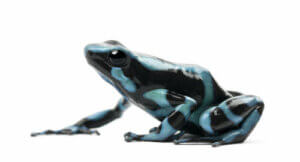

Written and verified by the lawyer Francisco María García
The poison dart frog is among the most poisonous animals in the world, despite its small size and attractive appearance. In reality, these amphibians consist of several species of tiny frogs that pack a powerful toxin in their bodies.
The poison dart frog: taxonomy and physical characteristics
Popularly, we refer to various species of anuran amphibians that compose the superfamily Dendrobatidae as poison dart frogs. At present, we know of more than 180 species of dendrobatids, which are usually divided into three subfamilies. All of them are strictly related to the aromobathid family of amphibians.
Poison dart frogs are endemic to South and Central America and have adapted to very different geographical areas. The greatest biodiversity of such amphibians is in Costa Rica and Panama, but they’re also abundant in Colombia, Peru, and Ecuador. In addition, humans have introduced one species in Hawaii, where they’re considered invasive.
Despite being very small, the poison dart frog attracts a lot of attention because of the intense colors of its skin. The striking chromatic patterns are a warning to predators, as they indicate their high toxicity. Currently, only two birds and one snake are known to be immune to their venom, and they can easily attack them.
Interestingly, the potent batrachotoxin in the skin of poison frogs isn’t something that their own body synthesizes. In fact, they ingest different insects (depending on the species and their habitat), which are responsible for the neurotoxin. In this way, the poison penetrates their body and they rely on it as a defense mechanism.
Types of poison dart frogs
The large family of dendrobatids includes species with many particularities, but which share essential characteristics. The following are the five most recognized and prominent types of poison dart frogs.
The golden dart frog (Phyllobates terribilis)
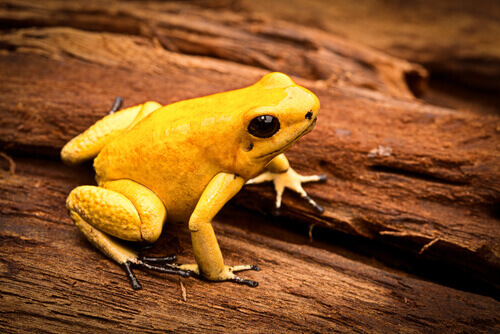
The golden dart frog is the most venomous species of its family and also one of the most lethal animals in the world. Experts estimate that just one gram of its toxin can cause the death of 5,000 individuals. For this reason, we can consider it the epitome of poison dart frogs. This species is endemic to the Pacific coast of Colombia.
Red and blue arrow frog (Oophaga pumilio)
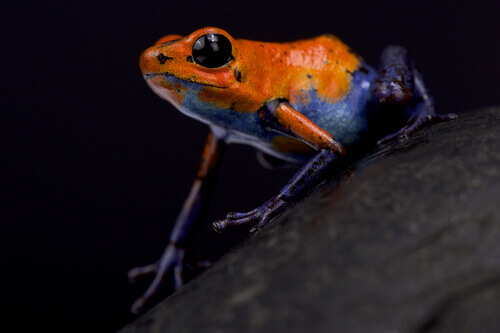
Its aposematic coloration pattern is very striking, indicating its high toxicity. This species obtains its potent skin venom from the consumption of ants that synthesize batrachotoxin.
The blue poison dart frog (Dendrobates azureus)
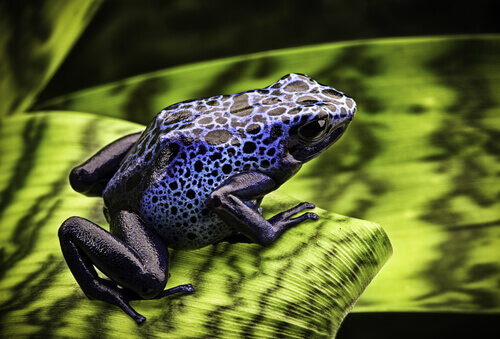
This species is one of the smallest in the dendrobatid family, with an average size of between 40 and 50 millimeters. Males are smaller and more slender than females and, in addition, they usually sing when they reach adulthood. Their natural habitat extends from southern Suriname to a large part of the Brazilian Amazon.
Different shades of blue may appear on its body, from lighter shades to a dark purple tone. Each specimen usually presents black spots of different designs and sizes.
The granular poison frog (Oophaga granulifera)
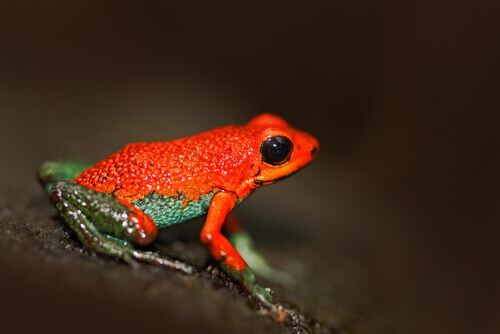
Originally, this species is endemic to the humid forests of the Golfo Dulce of Costa Rica. However, the devastation of its habitat is a threat to its survival.
Interesting facts about poison dart frogs
The peculiar popular name of these diverse species is due to their importance for the indigenous tribes of the American continent. In these peoples, we find the origin of this small amphibian.
The native peoples took advantage of the toxin of these amphibians for the darts or arrows they used to hunt and defend themselves. Therefore, these small amphibians played a central role in the survival of indigenous families.
Another interesting fact is that, as the arrow frog doesn’t produce its own venom, it can be harmless in a controlled environment. Likewise, experts warn against captive breeding, as they find their optimal conditions for development in their natural habitat.
This text is provided for informational purposes only and does not replace consultation with a professional. If in doubt, consult your specialist.